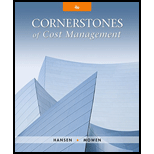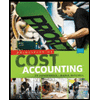
The following strategic objectives have been derived from a strategy that seeks to improve asset utilization by more careful development and use of its human assets and internal processes:
- a. Increase revenue from new products.
- b. Increase implementation of employee suggestions.
- c. Decrease operating expenses.
- d. Decrease cycle time for the development of new products.
- e. Decrease rework.
- f. Increase employee morale.
- g. Increase customer satisfaction.
- h. Increase access of key employees to customer and product information.
- i. Increase customer acquisition.
- j. Increase
return on investment (ROI). - k. Increase employee productivity.
- l. Decrease the collection period for
accounts receivable . - m. Increase employee skills.
The heart of the strategy is developing the company’s human resources. Management is convinced that empowering employees will lead to an increase in economic returns. Studies have shown that there is a positive relationship between employee morale and customer satisfaction. Furthermore, the more satisfied customers pay their bills more quickly. It was hypothesized that as employees became more involved and more productive, their morale would improve. Thus, the strategy incorporated key objectives that would lead to an increase in productivity and involvement.
Required:
- 1. Classify the objectives by perspective, and suggest a measure for each objective.
- 2. Prepare a strategy map that illustrates the likely causal relationships among the strategic objectives.
Trending nowThis is a popular solution!

Chapter 13 Solutions
Cornerstones of Cost Management (Cornerstones Series)
- The actions listed next are associated with either an activity-based operational control system or a traditional operational control system: a. Budgeted costs for the maintenance department are compared with the actual costs of the maintenance department. b. The maintenance department manager receives a bonus for beating budget. c. The costs of resources are traced to activities and then to products. d. The purchasing department is set up as a responsibility center. e. Activities are identified and listed. f. Activities are categorized as adding or not adding value to the organization. g. A standard for a products material usage cost is set and compared against the products actual materials usage cost. h. The cost of performing an activity is tracked over time. i. The distance between moves is identified as the cause of materials handling cost. j. A purchasing agent is rewarded for buying parts below the standard price set by the company. k. The cost of the materials handling activity is reduced dramatically by redesigning the plant layout. l. An investigation is undertaken to find out why the actual labor cost for the production of 1,000 units is greater than the labor standard allowed. m. The percentage of defective units is calculated and tracked over time. n. Engineering has been given the charge to find a way to reduce setup time by 75 percent. o. The manager of the receiving department lays off two receiving clerks so that the fourth-quarter budget can be met. Required: Classify the preceding actions as belonging to either an activity-based operational control system or a traditional control system. Explain why you classified each action as you did.arrow_forwardComponents of the organization that are demotivating for purposes of performance management are known as ______. A. business goals B. strategic plans C. uncontrollable factors D. incentivesarrow_forwardConsider the following quality improvement strategy as expressed by a series of if-then statements: If real-time feedback information capabilities improve, then post-sales service time will improve. If post-sales service time improves, then post-sales service quality will increase. If post-sales service quality increases, then customer satisfaction will increase. If customer satisfaction increases, then market share will increase. If market share increases, then sales will increase. If sales increase, then profits will increase. Required: 1. Prepare a strategy map that shows the cause-and-effect relationships of the quality improvement strategy (see Exhibit 13.10 for an illustrative example). 2. Explain how the quality improvement strategy can be tested.arrow_forward
- The following Box Scorecard was prepared for a value stream: Required: 1. How many nonfinancial measures are used to evaluate performance? Why are nonfinancial measures used? 2. Classify the operational measures as time-based, quality-based, or efficiency-based. Discuss the significance of each category for lean manufacturing. 3. What is the role of the Planned Future State column? 4. Discuss the capacity category and explain the meaning of each measure and its significance. 5. Discuss the relationship between the financial measures and the measures in the operational and capacity categories.arrow_forwardA key advantage of a decentralized organization is _________. A. increased administrative costs B. quicker decisions and response time C. the ease of aligning segment and company goals D. duplication of effortsarrow_forwardA Box Scorecard was prepared for a value stream: Required: 1. How many nonfinancial measures are used to evaluate performance? Why are nonfinancial measures used? 2. Classify the operational measures as time-based, quality-based, or efficiency-based. Discuss the significance of each category for lean manufacturing. 3. What is the role of the Planned Future State column? 4. Discuss the capacity category and explain the meaning of each measure and its significance. 5. Discuss the relationship between the financial measures and the measures in the operational and capacity categories.arrow_forward
- Which of the following objectives would be associated with the process perspective? a. Increasing information system capabilities b. Increasing service quality c. Decreasing unit product cost d. Increasing customer satisfactionarrow_forwardClassify each of the following performance measures into the balanced scorecard perspective to which it relates: financial perspective, internal operations perspective, learning and growth perspective, or customer perspective. A. Employee satisfaction surveys B. Units of waste per production process, uniformity of products and inventory control C. Number of energy-efficient bulbs replaced D. Management training course certificates awarded E. Divisional profit F. Number of customer referralsarrow_forwardInstructions 1.Based on the balanced scorecard and the following descriptions of the predicted relationships between strategic objectives, draw the scorecards strategy map. a.Training employees effectively and reducing employee turnover can both be expected to improve returns processing and reduce shipping errors. b.Both improving returns processing and reducing shipping errors can be expected to delight the customer. c.Delighting the customer can be expected to increase market share. 2.Based on the balanced scorecard and the following descriptions of the predicted relationships between performance metrics, draw the scorecards measure map. a.Median training hours per employee and average employee tenure will both influence hours from returned to refunded and number of erroneous shipments. b.Both hours from returned to refunded and number of erroneous shipments will affect percentage of customers who shop again and online customer satisfaction rating. c.Both percentage of customers who shop again and online customer satisfaction rating will influence the companys market share. 3.Label each element of the balanced scorecard.arrow_forward
- Which of the following objectives would likely be associated with the learning and growth perspective of the balanced scorecard? a. Increasing post-sales service efficiency b. Increasing information system capabilities c. Decreasing product development cycle time d. Improving product image and reputationarrow_forwardConsider the following list of scorecard measures: a. Product profitability b. Ratings from customer surveys c. Number of patents pending d. Strategic job coverage ratio e. Revenue per employee f. Quality costs g. Percentage of market h. Employee turnover percentages i. First-pass yields j. On-time delivery percentage k. Percentage of revenues from new sources l. Economic value added Required: Classify each measure according to the following: perspective, financial or nonfinancial, subjective or objective, and external or internal. When the perspective is process, identify which type of process: innovation, operations, or post-sales service.arrow_forwardFrom the following list of performance measures, label each one as Financial, Customer, Internal Business Processes, or Learning and Growth: Percentage of on-time deliveries Employee turnover ratio Revenue from new products Number of new customers Percentage of compensation based on team performance Percentage of products returned Operating income Time taken to replace defective productsarrow_forward
 Cornerstones of Cost Management (Cornerstones Ser...AccountingISBN:9781305970663Author:Don R. Hansen, Maryanne M. MowenPublisher:Cengage LearningPrinciples of Accounting Volume 2AccountingISBN:9781947172609Author:OpenStaxPublisher:OpenStax College
Cornerstones of Cost Management (Cornerstones Ser...AccountingISBN:9781305970663Author:Don R. Hansen, Maryanne M. MowenPublisher:Cengage LearningPrinciples of Accounting Volume 2AccountingISBN:9781947172609Author:OpenStaxPublisher:OpenStax College Managerial AccountingAccountingISBN:9781337912020Author:Carl Warren, Ph.d. Cma William B. TaylerPublisher:South-Western College Pub
Managerial AccountingAccountingISBN:9781337912020Author:Carl Warren, Ph.d. Cma William B. TaylerPublisher:South-Western College Pub Principles of Cost AccountingAccountingISBN:9781305087408Author:Edward J. Vanderbeck, Maria R. MitchellPublisher:Cengage Learning
Principles of Cost AccountingAccountingISBN:9781305087408Author:Edward J. Vanderbeck, Maria R. MitchellPublisher:Cengage Learning Managerial Accounting: The Cornerstone of Busines...AccountingISBN:9781337115773Author:Maryanne M. Mowen, Don R. Hansen, Dan L. HeitgerPublisher:Cengage Learning
Managerial Accounting: The Cornerstone of Busines...AccountingISBN:9781337115773Author:Maryanne M. Mowen, Don R. Hansen, Dan L. HeitgerPublisher:Cengage Learning Financial And Managerial AccountingAccountingISBN:9781337902663Author:WARREN, Carl S.Publisher:Cengage Learning,
Financial And Managerial AccountingAccountingISBN:9781337902663Author:WARREN, Carl S.Publisher:Cengage Learning,





